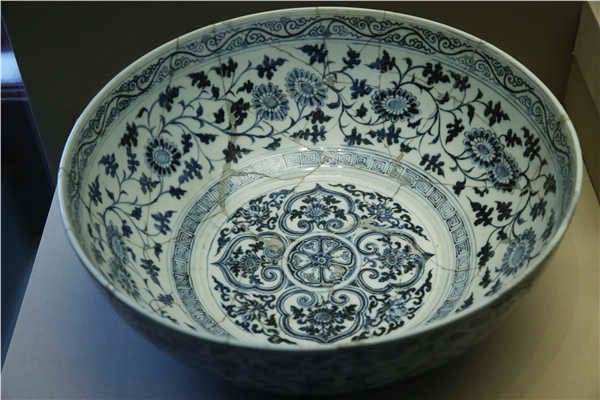
Visitors look at the ongoing exhibitions that showcase ceramics made in China's porcelain hub, Jingdezhen, for imperial courts during the Ming and Qing dynasties at the Palace Museum in Beijing. The imperial-kiln ceramics represent a zenith in the country's porcelain-making history.
Seventy-six exhibits are from the Palace Museum collections, while the rest are pieces with defects found in kilns in Jingdezhen, according to Lyu Chenglong, head of the porcelain research institute at the Palace Museum.
"Only the best pieces were sent to Beijing. Those with defects were broken and buried at Jingdezhen. You can immediately tell the difference at this exhibition," says Lyu.
"The copying of such pieces by the public was strictly prohibited. So you do not see similar pieces elsewhere."
Speaking about the pieces with defects, Lyu says failures to get the color or shape right was a common reason for the pieces to be destroyed. Some were, however, rejected for other "small" reasons.
"For instance, we found broken items in Jingdezhen, some as exquisite as those housed in the Forbidden City, but with mistakes in the chronological information, or with an extra paw for the dragons."
In 2015, the Palace Museum held a similar event on imperial kiln items from the 1368-1435 period, covering three emperors, but Lyu says the Chenghua period needed to be emphasized because he believes it represents a zenith in porcelain making during the Ming Dynasty.
"Chenghua imperial porcelain is among the most delicate, and the surfaces look like they are polished using oil," says Lyu. "Their patterns and colors are not flamboyant, but they reflect harmony and elegance.


















































